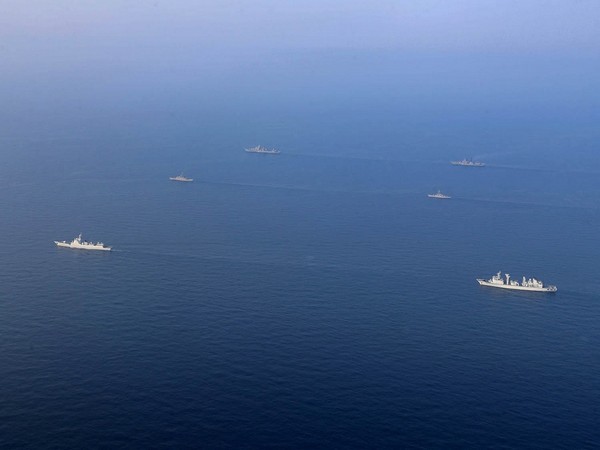Philippines removes Chinese barrier
Sep 26, 2023
Manila [Philippines], September 26: The Philippines said on Monday it executed a "special operation" to remove a floating barrier installed by China at a prime fishing patch in the South China Sea.
A move that could stoke tension after a years-long detente in Asia's most disputed waters.
The Philippines expressed outrage on Sunday and shared images of Chinese coastguard policing a long, ball-buoy barrier near the Scarborough Shoal, a rocky outcrop 200 km (124 miles) from the Philippines and the site of years of intermittent flare-ups over sovereignty and fishing rights.
Hours after the national security adviser had vowed to take action, the Philippine coastguard said it had removed the floating cordon, at the behest of President Ferdinand Marcos Jr and his special task force on the South China Sea.
"The barrier posed a hazard to navigation, a clear violation of international law. It also hinders the conduct of fishing and livelihood activities of Filipino fisherfolk," it said in a statement, describing the shoal as "an integral part of the Philippine national territory".
China's foreign ministry made no direct mention of the floating barrier but earlier on Monday defended the actions of its coastguard as "necessary measures" after a Philippine bureau of fisheries vessel "intruded" into its waters on Friday.
The trading of barbs underscores the strained relations between China and the Philippines at a time when Manila is rapidly strengthening military ties with rival power Washington, a move that has riled Beijing.
The strategic Scarborough Shoal, named after a British cargo vessel that ran aground on the atoll in the 18th century, was seized in 2012 by China, which has maintained a constant presence of coastguard and fishing trawlers there ever since.
Under the Philippines' pro-China former President Rodrigo Duterte, Chinese and Filipino fishermen had since 2017 enjoyed a peaceful coexistence at the shoal, known for its stunning turquoise lagoon that serves as a sanctuary for fishing boats during storms.
The Philippines' foreign ministry said the barrier was a violation of international law and Manila would "take all appropriate measures to protect our country's sovereignty and the livelihood of our fisherfolk".
Japan's government urged calm and said the South China Sea was central to regional stability.
"Our country strongly opposes any conduct that heightens tension in the South China Sea," Japanese Chief Cabinet Secretary HirokazuMatsuno said at a regular press conference.
Control of the shoal is a sensitive issue for China as it formed part of a legal case filed by the Philippines at the Permanent Court of Arbitration in the Hague, which in 2016 ruled that Beijing's claim to 90% of the South China Sea had no basis under international law.
China has refused to recognise the landmark ruling.
Though the tribunal did not rule on sovereignty over the shoal, located within the Philippines 200-mile exclusive economic zone, it said the area was a traditional fishing site for several countries and that China's previous blockades were unlawful.
The Philippines last week said it was weighing legal options over what it called China's destruction of coral in its EEZ, which could be another arbitration case.
China on Monday said the shoal, which it calls Huangyan Island, was "China's inherent territory", over which it had indisputable sovereignty.
"The Chinese coastguard have taken necessary measures in accordance with the law to intercept and drive away Philippine vessels, and the relevant operations are subject to professional restraint," foreign ministry spokesperson Wang Wenbin said.
Source: Fijian Broadcasting Corporation








